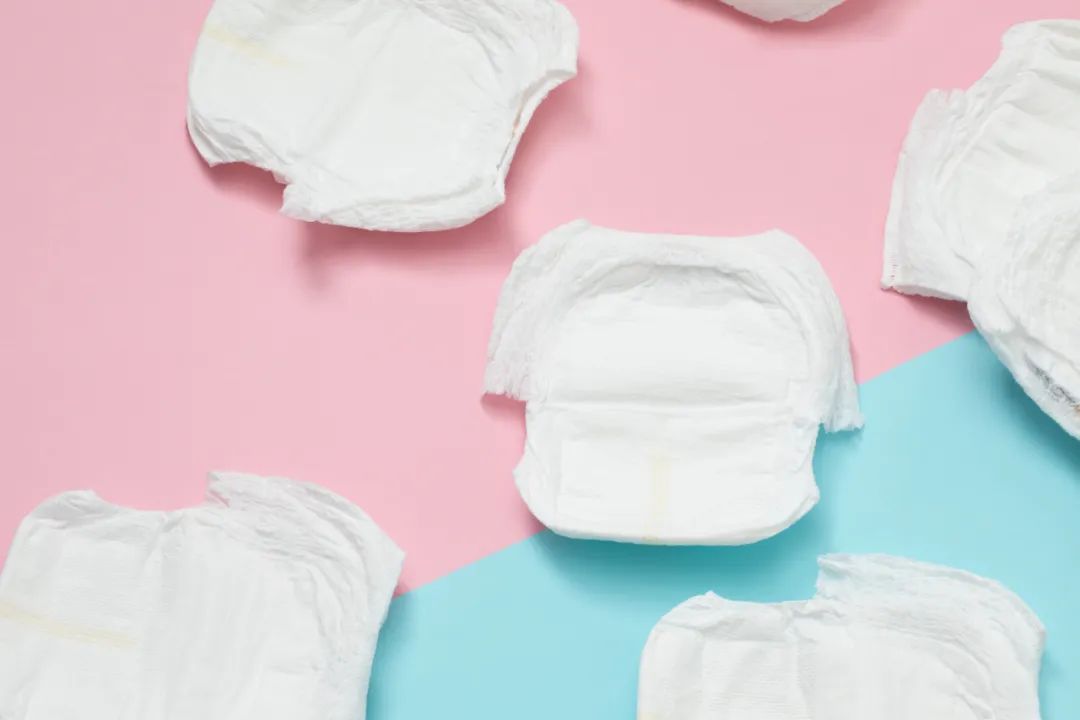Recently, Chan Mama in collaboration with Chan Magic Cube released the “Douyin E-Commerce Maternity and Baby Industry Analysis Report.” The report focuses on the specific performance of four sub-categories: baby supplies, milk powder/supplementary food/snacks/nutritional products, baby diapers, and maternity and nutrition products. It explores market opportunities from the angles of sales trends and dissection of selling points.

01 Market Overview
The Z-generation has become the new demographic in the maternity and baby market, and a shift in parenting concepts is driving industry upgrades.
From January to November 2024, the Douyin maternity and baby industry interest group was primarily concentrated in the 24-30 age range, followed by 18-23 year-olds. The post-95s and post-00s generations, representing Generation Z, have emerged as a new clientele in the maternity and baby market.
Amid changes in the consumer demographics and enhanced consumption levels, parenting concepts have evolved from traditional extensive methods to refined, scientific, and sophisticated parenting. This shift is advancing the maternity and baby industry towards specialization, refinement, and high-quality development, bringing both opportunities and challenges to the market.
Overall market demand is on the upswing, and promotional events inject new vitality.
From January to November 2024, the number of goods sold in Douyin’s maternity and baby industry slightly declined year-on-year, but sales volume and market size increased by 25% and 35%, respectively.
In an era of quality consumption, consumers have become more discerning, and the trend towards sophisticated consumption is on the rise, thus vendors need to ensure their product strength to enhance core competitiveness.
Considering market size trends, demand within the maternity and baby market shows an overall positive trajectory. Driven by consumers’ stockpiling mindset, promotional events like 618 and Double 11 significantly boost market vitality. Vendors should focus on these promotional periods, leveraging strategies like pre-sales marketing and giving additional gifts, to achieve definitive sales breakthroughs.
The baby market holds the lead, with the demand for “food” and “diapers” becoming more pronounced.
From January to November 2024, the three major categories in the baby market—baby products, milk powder/supplementary food/snacks/nutritional products, and baby diapers—saw growth rates that exceeded the overall maternity and baby industry’s growth, with milk powder and baby diapers growing by 41.75% and 38.07% year-on-year, respectively. The essential nature of “food” and “diapers” became increasingly evident.
Market share-wise, the baby market holds a commanding position and shows a slight expansion, with baby diapers surpassing maternity and nutritional products to become the top three. However, overall, the maternity and baby market landscape remains stable.
Maternity and baby industry exposure and interaction both grow, highlighting the impact of quality content.
Under the concept of scientific parenting, the new consumer groups in the maternity and baby market are gradually adopting the buying behavior of “studying while shopping.” The influence of quality content in shaping consumer mindset and guiding decision-making is increasingly pronounced, constructing a complete “awareness-grassroots-purchase” pathway on the Douyin platform.
From January to November 2024, exposure and interaction in the maternity and baby industry increased by 59% and 93%, respectively, with the average search index also climbing by 72%. Enhancing content creation skills has become an urgent task for maternity and baby merchants.
In terms of content presentation, there is an emergence of diverse content types like cute baby sharing, original drama, and parent-child daily life. Content that combines authenticity with professionalism is beneficial for deep-seated marketing.

02 Sub-Category Analysis
Baby Products
Focus on expanding niche categories in washing and care, feeding, and travel; children’s cosmetics see a surge in popularity.
Under the concept of refined parenting, the baby product market is mainly focused on expanding sub-categories in care, feeding, travel, and sleep. Baby skincare, bath products, and utensils/small appliances for supplementary food have continued to lead the market size and became the core strength driving development in baby products.
In response to demand for children’s fashion shows and stage performances, the market for children’s cosmetics is becoming a potential trendsetter, with category growth reaching 1.2w%+ year-on-year.
However, the children’s makeup market is still immature, with product safety and regulatory compliance often under debate. If merchants aim to seize opportunities for long-term development, a focus on professionalism and quality is imperative.
Home and outdoor dominate the scenes, with different effects targeted at specific demographics.
Looking at the target demographic, products are mainly tailored for children, newborns, and babys, with a significant market share held by teenagers. There is a difference in the primary effects advertised for products aimed at different age groups—for baby washing and care products, effects like moisturizing and hydrating are key, while for teenagers, oil control and acne prevention are more emphasized.
For products like baby bottles that cater primarily to babys, consumers tend to focus on safety features like anti-colic, drop resistance, and choke prevention.
Regarding usage scenarios, home and outdoor are the two mainstream ones.
Therefore, products that are lightweight, portable, compact, and flexible hold the upper hand.
When refining selling points, merchants should focus on “scenario-people-pain points” to accurately explore the diversified needs of different demographics in various scenarios to precisely reach potential consumers.
Milk Powder / Supplementary Food / Snacks / Nutritional Products
The baby nutrition market is vast and continuously growing, with baby supplementary food increasingly significant.
Baby nutritional products cover the entire lifecycle of a child’s development, with category education and user awareness relatively mature, leading to substantial market scale and continuous growth—making it a star track under the milk powder/supplementary food/snacks/nutritional products segment.
Baby supplementary food’s importance in daily baby diets is growing, ranking in the market size’s top three, becoming the undisputed “baby’s second meal.”
With the trend toward specialization, specific nutritional needs, such as for premature babies or those with allergies, are gaining attention, with special formula milk powders also being noted.
The audience demonstrates segmented characteristics; precise nutrition and quality assurance are core demands.
The “age and stage-based” feeding concept has gained wide acceptance, with the target demographic for milk powder/supplementary food/snacks/nutritional products showing distinct segmentation. Notably, in some basic baby nutritional products like calcium, iron, and zinc, merchants use the selling point of being suitable for both babys and pregnant women, presenting the advantage of “dual-purpose” to attract consumer attention.
In terms of ingredients, consumers pay close attention to high calcium, lactoferrin, and probiotics. As for functional effects, products that offer benefits like calcium supplementation, good absorption, and protective eye care are popular.
Additionally, products meeting new national standards and those that are originally imported are favored by consumers. Precise nutrition and quality assurance are the core concerns of consumers within the category of milk powder/supplementary food/snacks/nutritional products.
Baby Diapers
Diapers are the core sub-category; specialty diapers gain favor with medical-grade standards.
Within the sub-category of baby diapers, the main focus is diapers. With strict hygiene criteria and detailed safety standards, specialty diapers—emphasizing medical-grade qualities—pinpoint consumer pain points, ranking as the second-largest category under baby diapers.
Moreover, the hot sales of baby diapers have propelled the rapid development of related categories, such as diaper changing stations, with a year-on-year growth of up to 702%.
The selling point of baby diapers focuses on increasing comfort, with skin-friendly products being more favored.
Baby skin is sensitive and delicate. As baby diapers are in direct contact, ensuring maximum comfort for the baby is a central concern for consumers. The selling point of baby diapers revolves around breathability, softness, and skin-friendliness. Style-wise, ultra-thin designs that aim for a close-to-skin feel are pursued.
In terms of functional effects, consumers prefer to buy products with strong anti-leakage and absorption capabilities to keep the baby’s skin dry and breathable.
Products with added functional ingredients and superior materials are also favored by consumers.
Maternity and Nutritional Products
Clothing items dominate, with breastfeeding pillows and related products showing high growth.
The market for maternity and nutritional products is primarily centered around clothing items, with the top three categories being nursing bras/panties/checkup pants, dresses for pregnant women, and pants that support or cover the belly.
Archetype products reflect significant growth, with the comfort and convenience of breastfeeding pillows leading the trend.
Expecting mothers, while focusing on their child’s health, are also paying more attention to their own physical and emotional well-being.
Balancing convenience, comfort, style, and function—fashion and practicality are equally important.
In terms of functional effects, features like preventing sagging, containing side breasts, and lifting are consumer favorites, mainly concentrated in the nursing bra category—reflecting the high consumer interest in postpartum body shape recovery and management.
In terms of scenarios, breastfeeding dominates; thus, when selecting clothing, consumers tend to focus on the products’ convenience and comfort, opting for items with features like plus-size, loose fitting, second-skin feel, and elasticity.
Furthermore, in addition to convenience and comfort, products that offer a fashionable and stylish look are also popular among consumers.
Keywords:
1. Maternity and Baby Industry
2. CBME 2025 international exhibitors list










